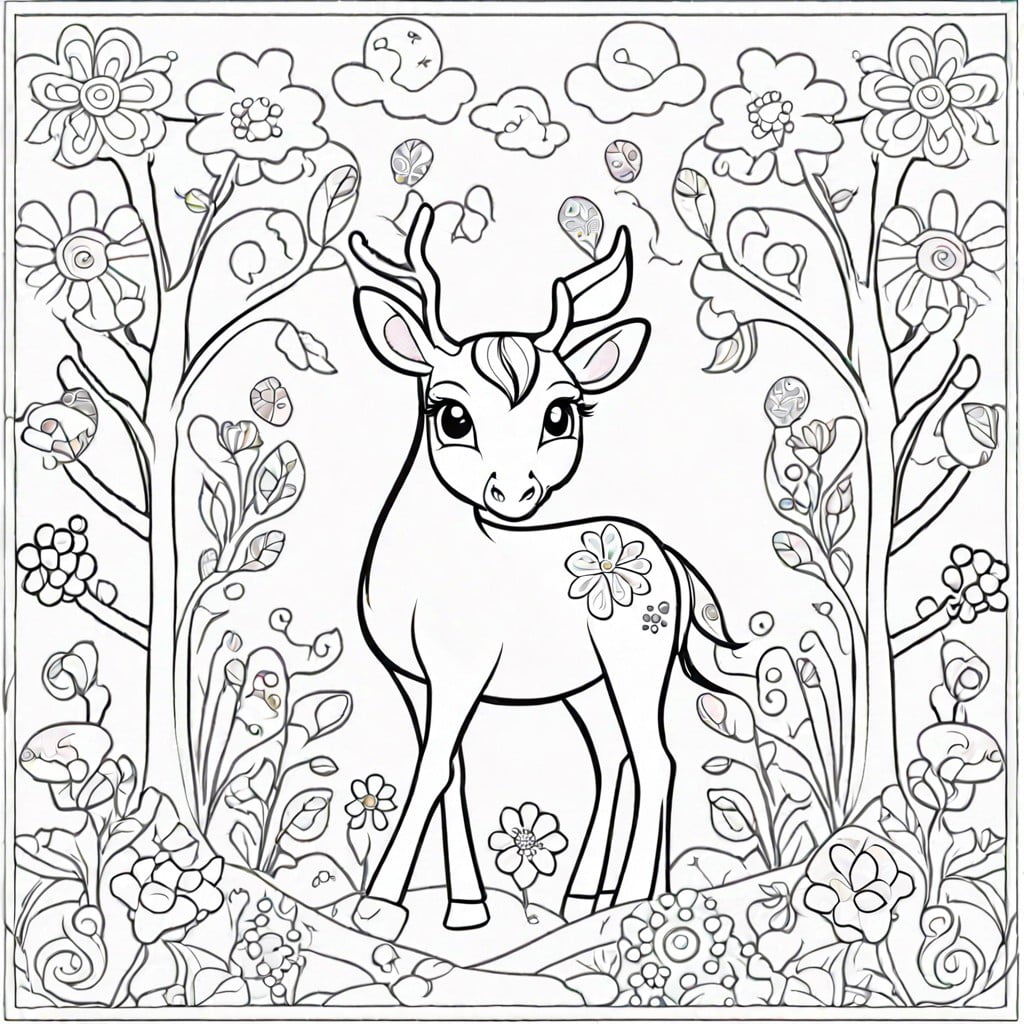Dive into the world of spiritual creativity with the Tabernacle coloring pages because each page beautifully reimagines this sacred structure in a way that engages both your artistic side and biblical curiosity.
Dive into the world of ancient structures as we journey through the timeless design of the Tabernacle. Coloring pages bring this biblical sanctuary to life, sparking imagination while providing a meditative creative outlet.
This article will offer a curated list of the best existing ideas for Tabernacle coloring pages, as well as a trove of fresh, unique angles to inspire your artistic pursuits.
So, grab your crayons and let’s dig in to explore these remarkable coloring ideas together!
The Holy Tabernacle
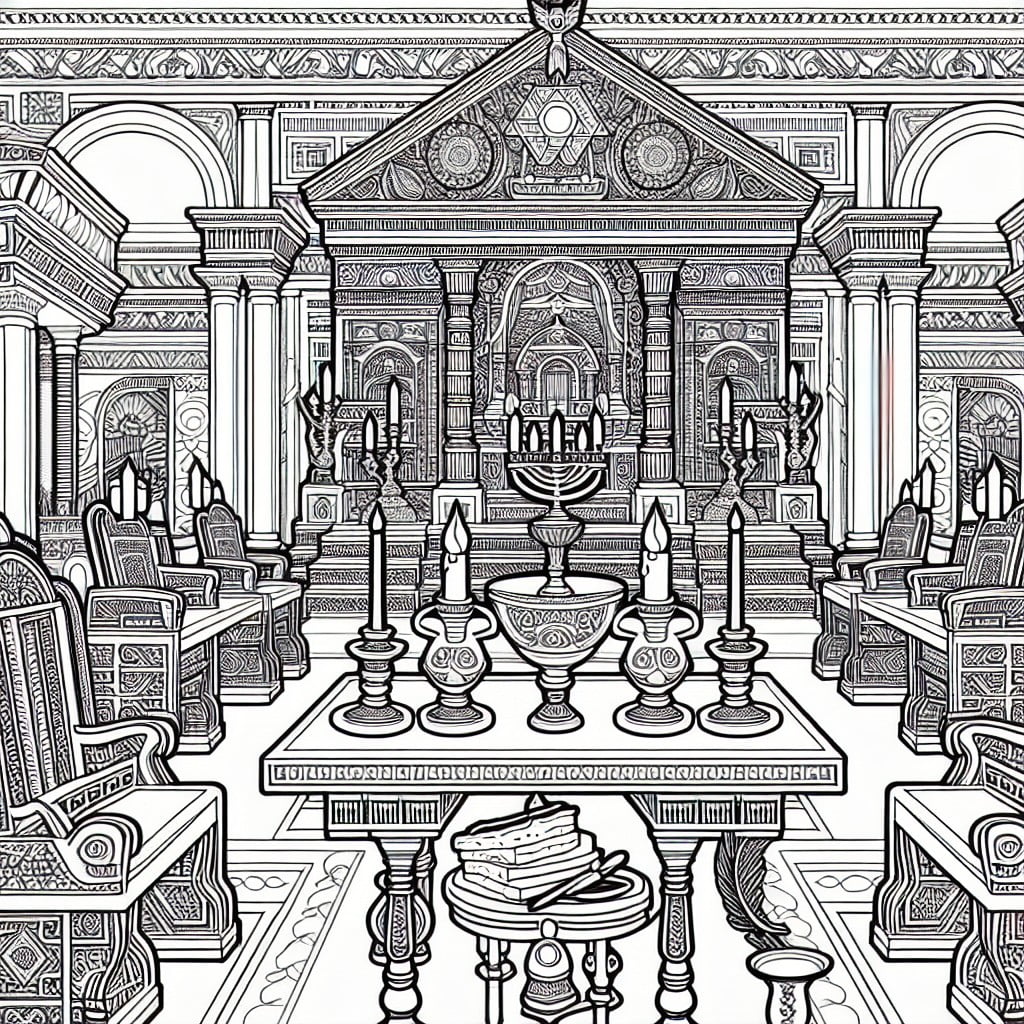
Experience the sacredness of the central structure used by the Israelites for worship during their desert travels. This coloring page offers a chance to engage with:
- The overall design of the tented sanctuary, reflecting the biblical description with its precise dimensions and divisions.
- The significance of different areas like the Holy of Holies and the Holy Place, where important rituals were performed.
- The rich fabrics and materials such as the fine linen and the blue, purple, and scarlet yarns that adorned the space.
- The details of the Tabernacle’s construction, like the acacia wood framing and the intricate craftsmanship that went into this dwelling place for the Divine presence.
Bring to life the solemnity and meticulous detail of this ancient sanctuary with your own colors and creativity.
Ark of the Covenant
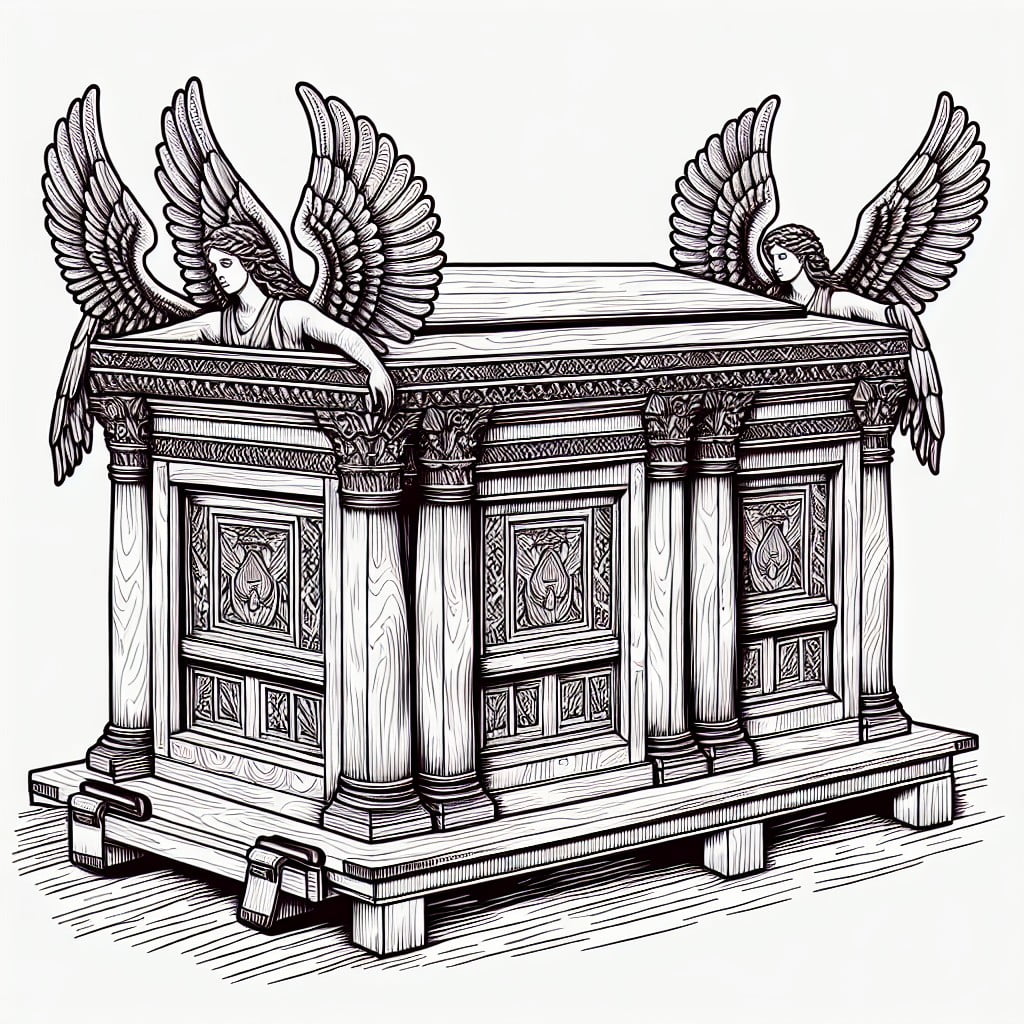
Delve into the heart of the Tabernacle with a coloring page featuring the Ark of the Covenant, symbolizing God’s presence and divine communication with His people.
Illustrate its intricate details:
- The golden chest: Show its dimensions and the acacia wood structure overlaid with gold.
- Cherubim: Depict the two gold angels facing each other with outstretched wings atop the lid, known as the mercy seat.
- Contents: Inside the chest, represent the two stone tablets of the Ten Commandments, Aaron’s rod that budded, and a pot of manna, highlighting the Israelites’ covenant with God.
- Staves: Include the poles used for transporting the Ark, emphasizing the sacredness of the artifact that must not be touched directly.
Encourage attention to the rich symbolism in each element, inviting reflection on the Ark’s significance within the holy space.
High Priest in the Tabernacle

Capture the grandeur and solemnity of one of the most respected figures in the Tabernacle with a coloring page that reflects his importance. Consider these key points to infuse your artwork with both symbolism and historical accuracy:
- Depict the High Priest adorned in his elaborate garments, complete with the ephod, breastplate, and turban, which are rich in detail and color.
- Highlight the Urim and Thummim on the breastplate, featuring twelve precious stones representing the tribes of Israel.
- Include the intricately woven robe with its golden bells and pomegranates along the hem to emphasize movement and sound, which signaled the High Priest’s entrance into the Holy of Holies.
- Ensure the High Priest’s expression captures the weight of his role as the intermediary between the people and God, conveying serenity and intense focus.
The Showbread Table

Within the sacred space, this table held twelve loaves, representing the twelve tribes of Israel, and symbolizing God’s provision and presence.
It was crafted from acacia wood and overlaid with pure gold, reflecting the divine glory.
Every Sabbath, the bread was replaced as part of a ritual, emphasizing the sustenance and perpetuity of God’s covenant with His people.
Coloring this page, you can focus on the intricate details of the table’s construction, the patterns on the bread, and the ritual action, infusing each part with color to bring the historical significance and spiritual symbolism to life.
The Golden Lampstand

Experience the intricate design of this seven-branched candelabrum, symbolizing the seven spirits of God as described in the Bible. Crafted from a single piece of gold, its detailed almond blossoms, knobs, and flowers represent purity and enlightenment. Coloring these elements can be an exercise in mindfulness, offering a deeper look into the spiritual significance behind the lampstand’s design.
As you shade the lamps, consider the representation of light and its importance in guiding the Israelites. This activity not only provides relaxation but also a unique way to connect with ancient sacred traditions.
The Tabernacle’s Outer Court
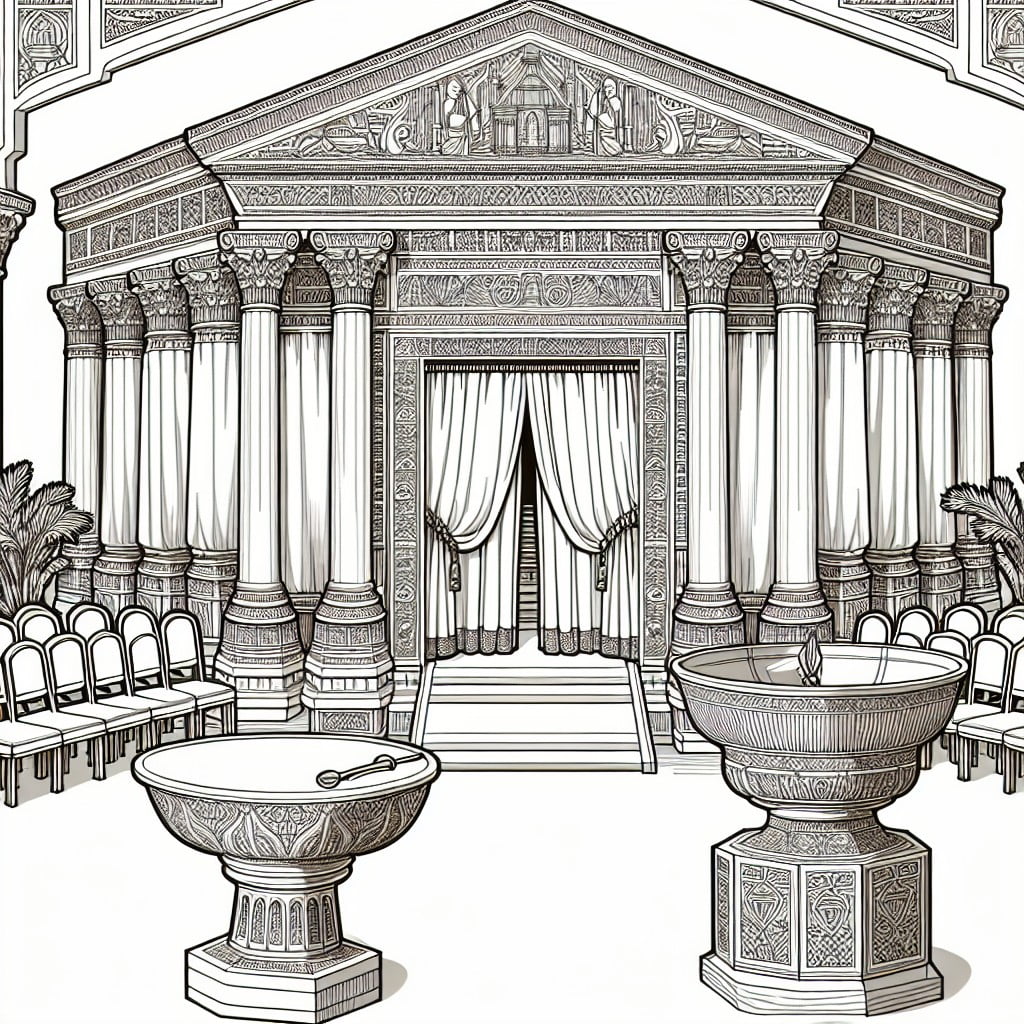
Visualize a large, open space bustling with activity – this is where Israelites would first step upon entering the Tabernacle area. It’s a rectangular courtyard surrounded by tall linen curtains, symbolizing separation from the outside world and holiness within. At one end, the impressive Bronze Altar where sacrifices are made underscores the serious tone of atonement. Nearby, the Bronze Laver filled with water reflects both the sky and the need for purification.
Imagine Levites moving between these structures, maintaining the rituals that sustain the spiritual life of the community. Coloring this scene invites reflection on the processes of sacrifice, cleansing, and approaching the Divine with reverence.
The Altar of Incense
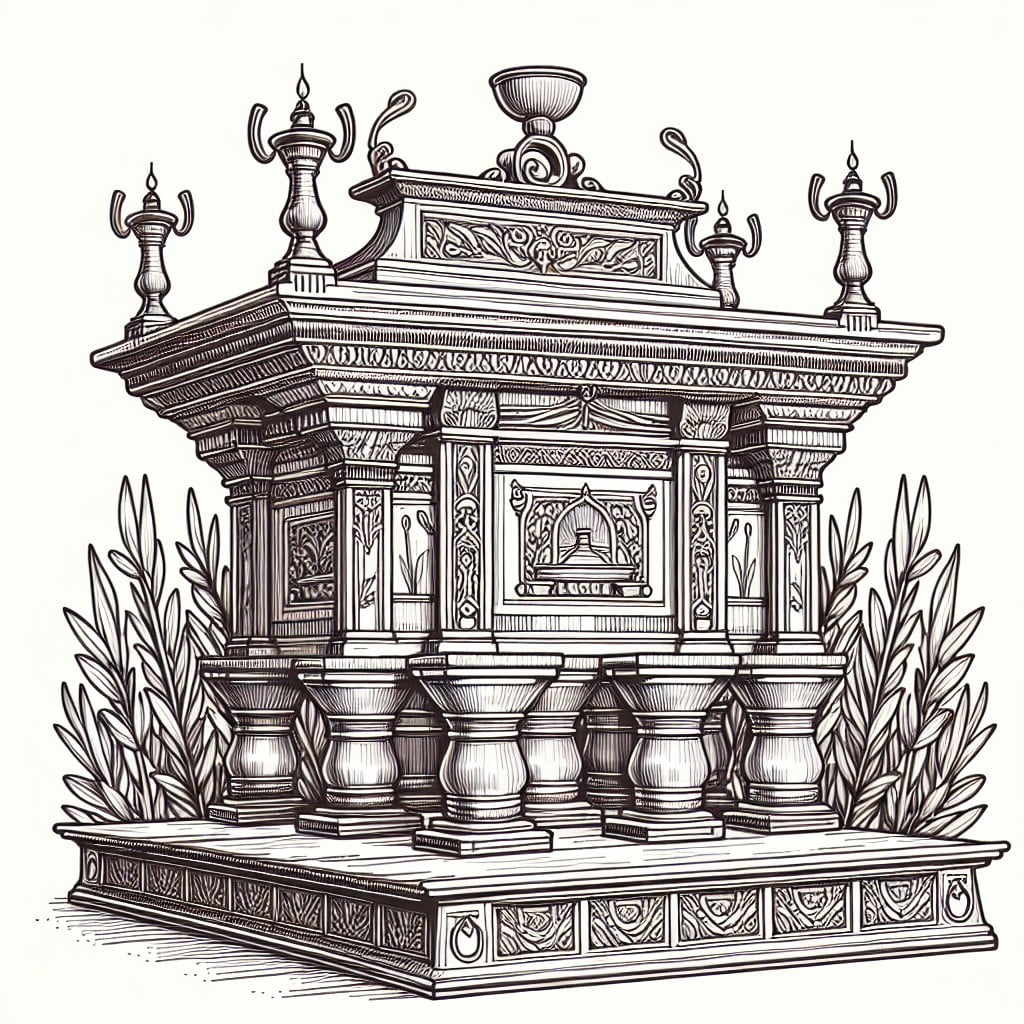
Offering a blend of aromatic spices and frankincense, this altar represents the prayers of the people rising to Heaven. Positioned before the Veil, directly facing the Ark, it serves as a daily reminder for individuals to seek spiritual connection.
Its horns touched by the high priest’s blood on Yom Kippur symbolize atonement and sanctification. Its acacia wood structure overlaid with pure gold highlights the intertwining of humanity and divinity within worship practices.
As you color, reflect on the significance of prayer and the ever-present call for purity in one’s life.
The Bronze Basin
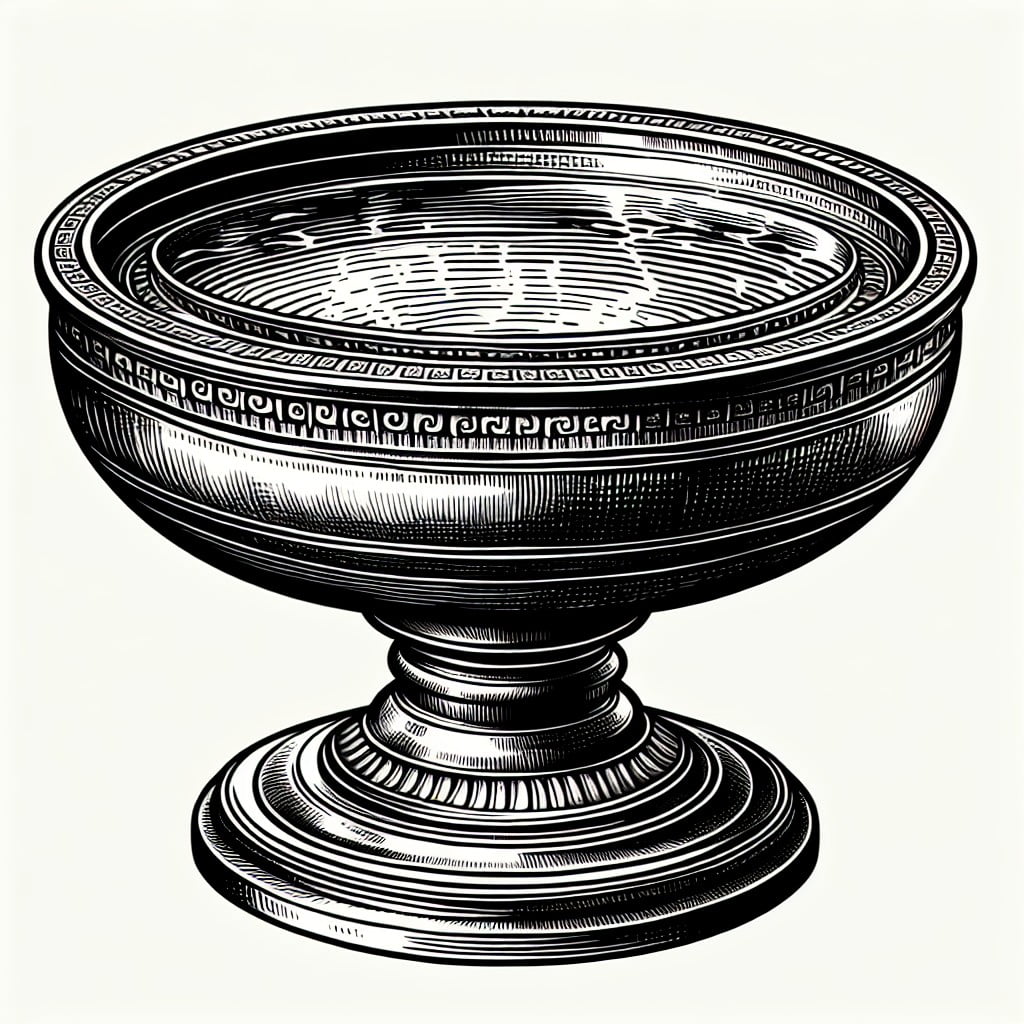
Positioned between the Altar of Burnt Offering and the Tabernacle’s entrance, the Bronze Basin, or Laver, was used by priests for ritual cleansing. This act symbolized purification and preparation needed to serve in God’s presence.
Here are some key elements to include in a coloring page:
- Illustrate the basin itself, round and set on a pedestal, emphasizing its ornate, reflective qualities.
- Depict water within the basin, possibly with ripples, to signify its use.
- Show the base of the basin, sometimes illustrated with sculpted lion heads or oxen, from which water might flow.
- Include a priest, clothed in traditional garments, washing his hands and feet, to provide context on the function of the basin.
- Add subtle details that hint at the craftsmanship of the Bronze Basin, like hammered textures or artistic motifs.
Remember, the illustration should convey a sense of reverence and the importance of cleanliness in the sacred space.
The Veil of the Tabernacle
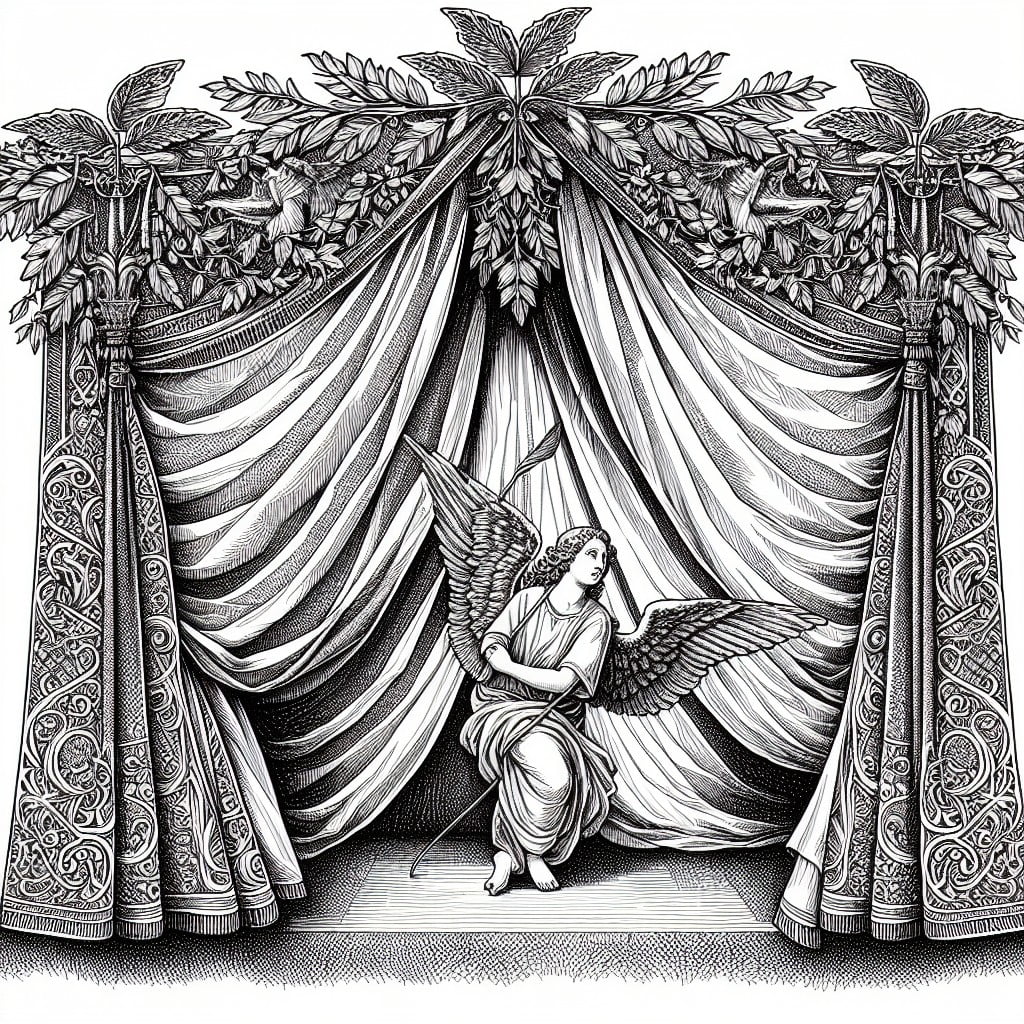
Separating the Holy Place from the Most Holy Place, this intricate curtain symbolizes the barrier between God and humanity. In coloring pages, the Veil can be depicted with rich, deep hues and golden embroidery to represent its sacredness. Embellishments on the Veil can include cherubim, highlighting its divine craftsmanship. This element offers an opportunity to discuss the significance of the Veil’s tearing upon Jesus’ death, marking the moment when the barrier to God was removed.
As children color, they can reflect on the meaning of accessibility to God and the importance of the Veil in biblical history.
The Tabernacle in the Wilderness

Explore the nomadic sanctuary where the Israelites worshipped during their desert journey. Coloring this scene offers a creative way to understand the setting and significance of this portable dwelling place.
Consider the following:
- It features pillars of cloud and fire symbolizing divine guidance.
- Depict the encampment of the Twelve Tribes arranged around it, showcasing unity and order.
- Highlight the protective coverings, emphasizing the reverence and holiness of the inner contents.
- Show the detailed construction, reflecting the skilled craftsmanship instructed by God.
Take the opportunity to add hues to the desert landscape, giving context to the Tabernacle’s importance within its transient environment.




